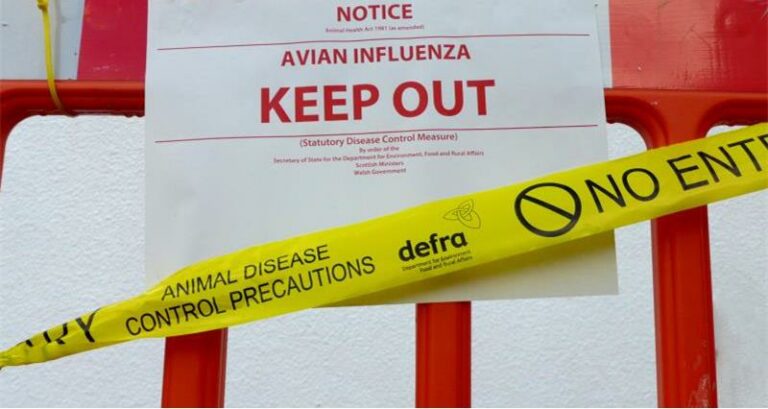The UK’s bird flu outbreak escalated further on Tuesday as two new cases of highly pathogenic avian influenza (HPAI) H5N1 were confirmed at large commercial poultry sites in Norfolk and Kent, bringing the UK-wide total for the 2025–26 season to 56 cases.
The latest detections were reported at premises near Mundford in Breckland, Norfolk, and near Lydd in Folkestone and Hythe, Kent. In both locations, 3-kilometre protection zones and 10-kilometre surveillance zones have been established, and all poultry on the affected sites will be humanely culled.
These cases follow another confirmation on 24 November at a commercial premises near Dalton-in-Furness in Westmorland and Furness, Cumbria, where the same disease control measures are in force. The recent surge also comes after further outbreaks identified on 23 November at a second site near Swaffham in Breckland, Norfolk, and at a commercial premises near Gainsborough in West Lindsey, Lincolnshire.
Mandatory housing measures remain in force across England and Wales as part of the Avian Influenza Prevention Zone. Keepers with more than 50 birds must house them, while those with fewer than 50 birds must do so if they sell or give away eggs, meat or live birds. All bird keepers across England, Scotland and Wales are legally required to maintain strict biosecurity practices to reduce the risk of the virus spreading.
The UK has now recorded 44 confirmed HPAI H5N1 cases in England, one in Scotland, seven in Wales and four in Northern Ireland, bringing the total number of cases this season to 56. The first case of the season was confirmed in Northern Ireland on 9 October, followed by England on 11 October, Wales on 25 October and Scotland on 12 November. Under World Organisation for Animal Health rules, the UK remains no longer free from highly pathogenic avian influenza.


